ここから本文です。
株式会社シリコン研究所(企業紹介)Silicon Hydrogen Research Institute Co., Ltd.
知恵の経営、元気印、経営革新、チャレンジ・バイの各認定等を受けた府内中小企業を紹介するページです。
多孔性シリコンから水素社会を創る Creating a hydrogen society from porous silicon
(2024年2月16日更新、ものづくり振興課 足利)
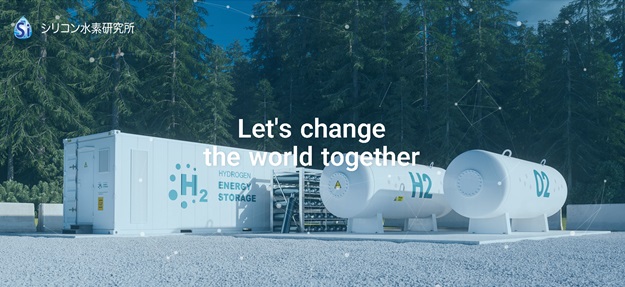
「ZET-summit 2024」にご来場くださった、株式会社シリコン研究所(外部リンク)の明石代表取締役、熊谷取締役にお話をおうかがいしました。
多孔性シリコンSi+の製造 Production of porous silicon Si+
同社には大きく2つの事業の柱があり、まず1つは、「多孔性シリコン(Si+)の製造」です。
The company has two main business pillars, the first being the production of porous silicon (Si+).
そもそも「シリコン(ケイ素Si)」は単体では自然界に存在せず、酸素と結びついて(二酸化ケイ素SiO2:地球上の地表付近では酸素に次いで多い元素)、ケイ石や石英、水晶等として存在しています。そして、「シリコン」は、ケイ石等を電気炉で、コークスなどの炭素材で還元して作ります(なお、それから複雑な化学反応を加えて作り出すのが、無機と有機の性質を兼ね備える合成樹脂「シリコーン」(ゴムなど5,000種類)です)。
In the first place, "silicon (Si)" does not exist alone in nature, but in combination with oxygen (silicon dioxide SiO2: the second most abundant element near the earth's surface after oxygen) and exists as silica, quartz, crystal, etc. Masu. "Silicon" is made by reducing silica stone etc. with carbon materials such as coke in an electric furnace. "Silicone" (5,000 types including rubber).
同社は、天然のケイ石等あるいはリサイクルシリコンをマグネシウムと化学反応させて、蒸留することで「多孔性シリコン」を作り出す特許技術を開発されたのです。しかも、必要な時に必要な量だけ作り出せる、すなわち大量生産もできるということです。
The company has developed a patented technology that creates "porous silicon" by chemically reacting natural silica or recycled silicon with magnesium and distilling it. What's more, it can be produced in just the amount needed when it's needed, which means it can be mass-produced.
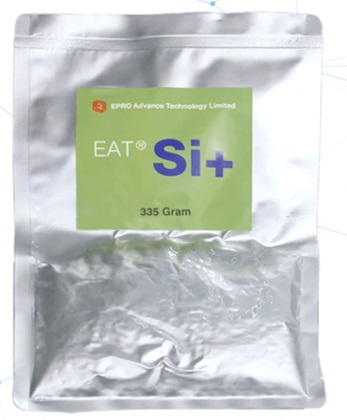
多孔性シリコンから水素を大量生産 Mass production of hydrogen from porous silicon
では、その多孔性シリコンが大量生産できるということに、どういった意義があるのか?
So, what is the significance of the fact that porous silicon can be mass-produced?
実は水素を生成する「ナノシリコン」が2013年に初めて発表されました。しかし、水素の大量生産が困難であるなどの課題があります。
In fact, "nanosilicon" that generates hydrogen was first announced in 2013. However, there are challenges, such as the difficulty of producing hydrogen in large quantities.
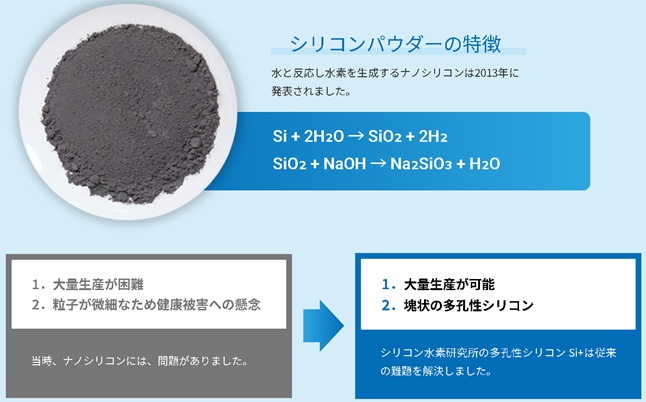
その課題を克服するのが「多孔性シリコン」なのです。
Porous silicon overcomes this problem.
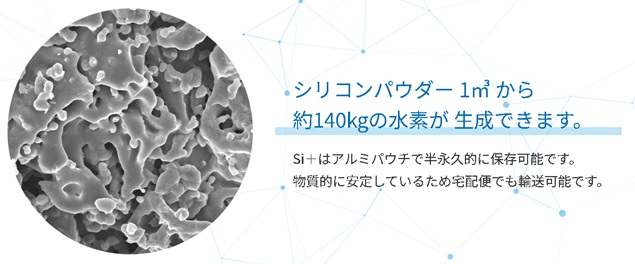
水素社会の創生 Creating a hydrogen society
そうした多孔性シリコンから水素を大量に作り出す「リアクター」は、水素社会の創生に大いに活用できるアイテムです。
A "reactor" that can produce large quantities of hydrogen from such porous silicon is an item that can be greatly utilized to create a hydrogen society.
例えば、燃料電池と中古Vバッテリーを組み合すことで「移動式水素発電所」になります。
For example, by combining a fuel cell and a used V battery, you can create a "mobile hydrogen power plant."
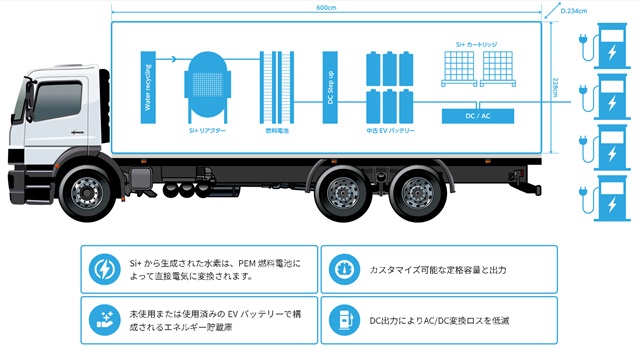
あるいは、国内で年間100万トン生産されている水ガラスの生産工程で多くのCO2を排出していますが、同社の水素生成の副産物として水ガラスができるのです。
Alternatively, water glass is produced as a by-product of the company's hydrogen production, although the production process for water glass, which is produced in Japan at a rate of 1 million tons per year, emits a large amount of CO2.
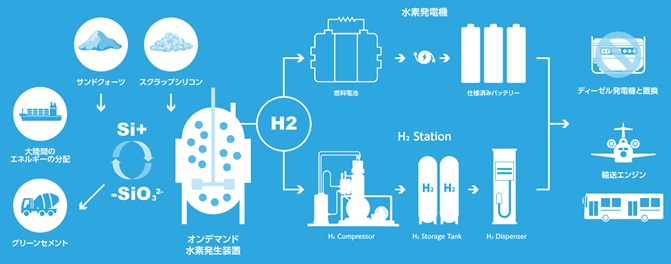
こうして、多孔性シリコンから水素社会を創り出すことが、同社の使命です。
The company's mission is to create a hydrogen society from porous silicon.
お問い合わせ


